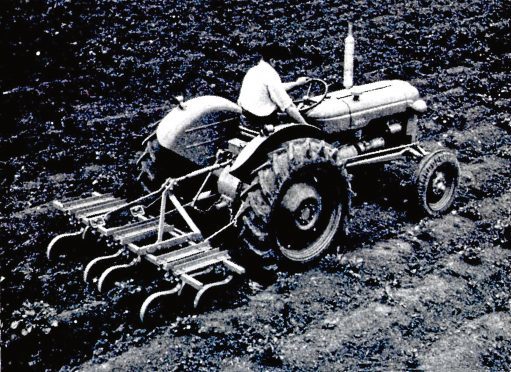One of the most popular tractors on the vintage scene today is the little Fordson Dexta.
Popular for its easy starting diesel engine, its small light-weight dimensions and its ability with a match plough, the high-selling machine has many followers who rekindle memories of its heyday.
Launched by the Ford Motor Company 60 years ago this month, the Dexta proved to be a perfect sibling for the larger Fordson Major, and found favour on many farms.
It is widely recognised that the tractor was introduced at the behest of Fordson salesmen who wanted a comparable machine to take on Fordson’s great rival – the grey menace of the Ferguson which by 1957 had evolved into the 35.
When the little grey Fergie with its complete Ferguson System took farming by storm in the post-War years Fordson, which had commanded the market with its N and E27N models, started to suffer. This resulted in sales staff putting pressure on design staff to come up with a competitor.
The backdrop to the intense rivalry between Ford and Ferguson dates to when Ford initially built Ferguson system tractors as the Ford Ferguson.
Ford later upgraded it to the 8N model in 1947 by which time Ferguson returned to the UK to build his tractor at Coventry.
Ferguson argued Ford had infringed its patents and took the company to court leading to them paying out $9.25million in 1952.
Although many farmers used the heavier Fordson Majors for ploughing and other heavy tasks, they had a need for smaller tractors for row crop, carting and loader duties.
Therefore, it was in Ford’s best interests to have such a model of its own to offer.
The company started working on ideas in the late 1940s by using an 8 horsepower (hp) side valve engine from an E04A Anglia car and a three-speed gearbox.
However more serious development went on with great care being taken by designer John Foxwell not to infringe any Ferguson patents.
The gearbox from the 8N was used with an extra two gears created and a Perkins P3 diesel engine was fitted.
Ford wanted to build the engine in house but in the end, it made the castings at its new foundry while Perkins assembled it.
Ironically it was a similar engine to what was eventually installed in the rival MF 35 tractor in 1959.
Five prototypes were sent for testing at Elvedon Estates in 1955 and they proved very reliable.
Ford had designated its new tractor as the 957E, however by the time of its launch in 1957 it had gained the name of the Fordson Dexta and debate continues as to how this name came about.
The official launch took place for trade delegates, dealers and press at Alexandra Palace, London, on November 19 to 26 that year.
The venue christened the Dexta -Drome was full of the new tractors alongside its work mate the larger Major which featured in a recreation of the famous advertising picture of the two tractors sitting side by side with the drivers shaking hands.
Ford’s arrangement with Ransomes meant the Ipswich concern came up with a new range of smaller and lighter implements more suited to the new 32hp tractor.
Revolving turntables illustrated the tractor at the launch, while many others were hitched to a wide range of implements offered by Ransomes, which also had one of the combines present.
Full production of the Dexta began at Dagenham in February 1958 and in that year a whole series of demonstrations to take place.
A petrol version was also offered for sale but it was mainly for export markets.
The Live Drive Dexta arrived in 1959 and further improvements were made over the years.
Companies such as Roadless introduced a four-wheel drive option and Stormont Engineering in Kent offered a narrow vineyard version.
The slightly lager Super Dexta was launched at the 1961 Smithfield Show in the familiar blue and orange colour scheme before the arrival of the New Performance Dexta and Super Dexta models in 1963 in the new blue and grey livery.
Like the Major the Dexta was discontinued when the new Basildon built 6X range was launched in December 1964, although the Dexta name still appeared on the smaller models for a time.
